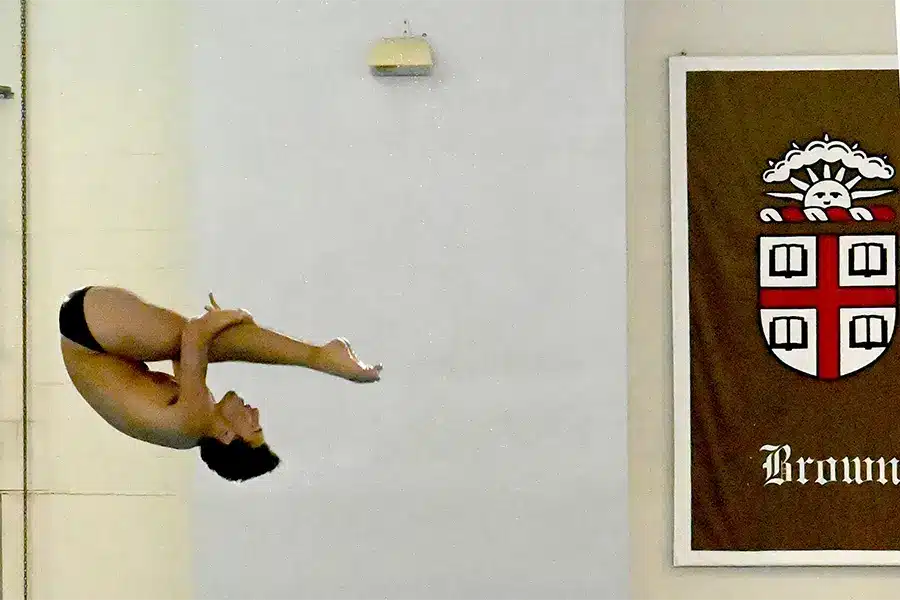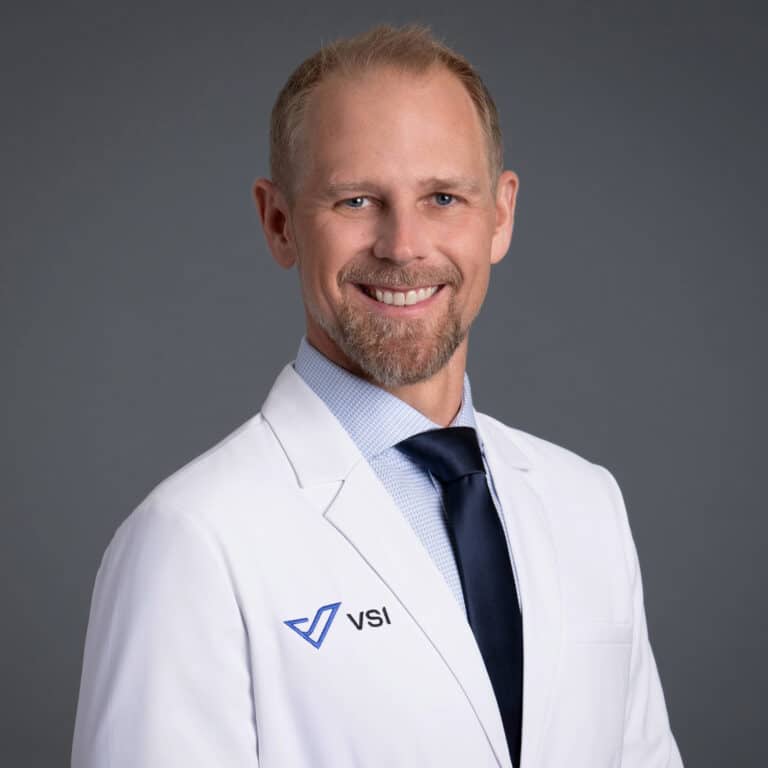
Comeback Story: A Collegiate Athlete Heals His Spine Without Surgery
When Matteo Vasiliadis first came to see Dr. Christopher Good, he was honest with him — the best solution to cure his back pain was to give up diving. However, that wasn’t an option for the then high school sophomore who had been diving since he was five and competing since he was eleven. Matteo had his sights set on a D1 diving career in college, so he and his parents were both looking for solutions to his pain that would keep him on track toward that goal.
Understanding Matteo’s Injury: Pars Fracture Explained
Matteo faced a serious challenge because, at that point, he had two fractures and two breaks in his spine and was in a lot of pain. His injury wasn’t from a fall, accident, or lack of talent. It was a pars fracture, also known as spondylolysis. This is a stress fracture in the part of the spine called the ‘pars,’ a weaker area that’s still developing in young people.
“I didn’t have an accident or any specific moment that started the pain. It happened over time from hitting the water as I learned dives, had a bad take off, or didn’t stay tight enough,” Matteo explained. “It got progressively worse and worse so that after a practice, I was in a lot of pain.”
The Rise of Overuse Injuries in Young Athletes
While these kinds of fractures can occur as a result of a traumatic incident, they are most commonly seen in young athletes engaging in sports that involve repetitive spinal motion. This includes sports like football, cheer, dance, gymnastics, soccer, tennis, and diving. In Matteo’s case, training six days a week for 2.5 hours a day and performing 50 to 80 dives per practice, explained why a repetitive injury had transpired.
These types of overuse injuries in student athletes are on the rise and occurring at very high levels. Data shows they are responsible for as much as 42% of injuries in individual sports and 33% in team sports.
Exploring Treatment Options: Matteo’s Stem Cell Therapy Journey
Returning to Matteo, the good news for him was that Dr. Good didn’t believe he needed surgery. So, in the summer of 2021, he underwent stem cell therapy, a natural, non-surgical outpatient procedure aimed at healing the injured area of his spine. “On the drive home from my first appointment with Dr. Good, I had my first call from a college coach, so I knew in my mind I wasn’t quitting. I just had to get past the pain, and stem cell therapy seemed like a good way to do it,” Matteo explained.
How Stem Cell Therapy Works
Here’s how stem cell therapy works:
🧬 Retrieve healthy stem cells from the patient’s own bone marrow
🧬 Concentrate and inject those healthy cells directly into the injury
🧬 Stem cells regenerate or “strengthen” the damaged tissue
Watch the Podcast on Youtube
Recovery and Mental Resilience
Matteo said the procedure was easy for him and the recovery was too. He wasn’t doing strenuous movements but was up and walking quickly. However, your discs take time to heal; it’s not instantaneous. So, he took nine months off from his sport to allow the stem cells to do their work. This was especially daunting because he underwent this procedure right when college recruiting season began for him — his sophomore year.
When asked about the mental struggles of taking time off from his sport to focus on the stem cell healing process, Matteo shared that the key to his success and mental dexterity was keeping his mind in the sport, even when his body couldn’t be. To achieve this, he coached his local summer dive team, where his journey had begun at age five. “It’s about perspective,” Matteo explained. “I could have viewed my situation as unfair and demoralizing, but instead I saw it as motivation and an opportunity to do some good — for both me and young divers.”
Returning to the Pool
Matteo said he didn’t really know if the procedure had worked until his first time back in the pool. He started with jumps and getting out of the pool without using the steps. Nothing hurt, so he progressed to dives. “That’s when I really saw improvement and progress,” he explained. “For the first time ever since the age of ten or eleven, when I started taking diving seriously, I didn’t feel any pain in my sport.”
A Successful Comeback: Competing Again
By the following season, in May 2022, Matteo was back to competing. “I didn’t think I would get back to it so quickly, but my coach took everything super slow, which I think helped me,” he said.
With a healed back, Matteo was able to start lifting weights for the first time — something he hadn’t ever been able to do because of his back pain. That helped him get stronger. He became a stickler for technique and safety, driven by a desire not to hurt himself again, and as a result, his diving capabilities soared. He was recruited by Brown University, as he had always hoped, and three years later, he is competing as a D1 college athlete.
Looking Ahead at Matteo’s Future Aspirations
He’s not yet sure what he’ll do after college, but seeing his body heal itself through the stem cell therapy procedure has sparked an interest in regenerative medicine and biotechnology. Who knows, Matteo mused — maybe it will lead him to his future career. For now, he’s just grateful to have learned about it and experienced firsthand the difference it can make.
The Impact of Recovery
“If I hadn’t gotten stem cell therapy, I think I would be pushing through pain constantly, and I don’t think I would be at the level I am now. Healing my back helped me get stronger and boosted my confidence. Diving with pain for so many years wasn’t good for my mindset — it kept me from trying new things, developing my abilities, and getting better,” Matteo explained.
“Deciding to take a nine-month break wasn’t easy, but it was better than quitting, which I knew wasn’t an option for me,” he continued. “I feel like taking the risk for a better chance of recovery instead of just scraping by was the right choice, and I’m so happy I did it because it gave me the chance to see where my diving could take me.”
Learn More About Matteo’s Treatment
Topics covered
About the Author
Featured Resources
Insights to Achieve a Pain-Free Life



